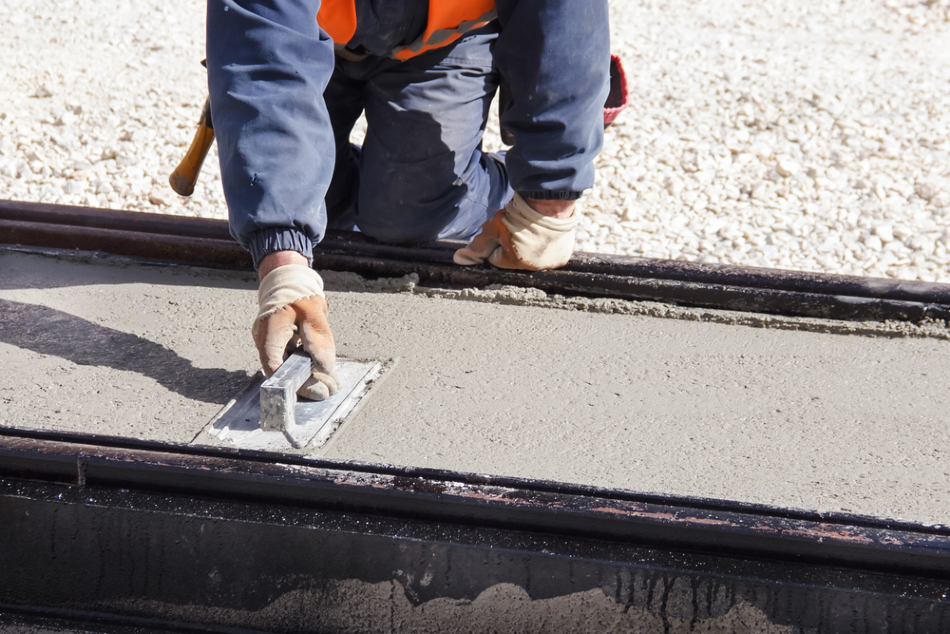Over the centuries, concrete production has mostly remained unchanged: from the Roman concrete to modern construction methods, it involves a process of combining hard materials such as sand with various binders, including water and cement. However, by mixing photosynthetic bacteria in with the sand, an interdisciplinary team at the University of Colorado, Boulder, has developed living concrete that is capable of reproduction.

Image Credit: Slavica Stajic/Shutterstock.com
Using a mold to shape the bricks, the team first made a scaffold using sand and hydrogel for the bacteria to grow. The hydrogel absorbs moisture and allows the bacteria to harden, in a similar way to the calcification process coral and seashells go through. The result was a living green material that had the same strength and ability of cement based-mortar.
"We use photosynthetic cyanobacteria to biomineralize the scaffold, so it actually is really green. It looks like a Frankenstein-type material."
Wil Srubar, head of the Living Materials Laboratory at the University of Colorado Boulder
"That's exactly what we're trying to create--something that stays alive," added Srubar.
Sustainable green concrete
Published in the journal, Matter, Srubar and his colleagues describe a material that could eventually lead to a lower carbon footprint in concrete production. This is a significant development that “represents a new and exciting class of low-carbon, designer construction materials,” according to Andrea Hamilton, an expert on concrete at the University of Strathclyde, Scotland.
Other than water, concrete is by far the most widely used substance on the planet today and has shaped the development of the modern world. Used to build a wide range of structures throughout history, including the Colosseum in Rome, the Three Gorges Dam on the Yangtze River, and the Pentagon in Washington DC, concrete is an important part of human progress. It protects us from the elements and allows us to tame nature as concrete structures provide shelter and housing for billions. It also fortifies human defense systems against natural disasters.
However, the process of making concrete is so labor-intensive, it is thought to be responsible for 4-8% of global carbon (CO2) emissions. Coal, oil, and gas are the only materials that produce more greenhouse gases and it is the third-ranking producer of anthropogenic (man-made) CO2 after energy and transport. Therefore, it could be said that concrete production intensifies the extreme weather events it is supposed to protect us from.
This latest breakthrough could improve the “efficiency and sustainability” of building according to lead author Chelsea Heveran, a former postdoctoral research assistant at CU Boulder. Structures that incorporate a living material could repair their own cracks and absorb toxins from the air. Construction already involves the use of biological materials such as wood, but it is no longer alive: “We’re asking: Why can’t we keep them alive and have that biology do something beneficial, too?” added Srubar.
Bricks make bricks
During the research, Srubar and his team discovered the living bricks had the ability to reproduce. When divided into two, each half of the brick was able to form two completely new bricks of the original brick size. From one parent brick, the team were able to demonstrate that after three generations, up to eight bricks could be reproduced.
“We know that bacteria grow at an exponential rate,” said Srubar. “That’s different than how we, say, 3D-print a block or cast a brick. If we can grow our materials biologically, then we can manufacture at an exponential scale.”
While the strength of the bricks is not yet up to the standard of modern reinforced concrete, the two-inch cube bricks can support the weight of a person standing on top on them. The next step for the team is improving the strength and durability as well as overcoming some other limitations and finding potential applications for the material.
For example, the concrete requires the bacteria in the parent brick to remain living to reproduce, but it is necessary for concrete to be completely dried out to reach maximum structural capacity, which, in turn, compromises the bacterial cultures. By controlling the humidity and temperature, the researchers discovered they were able to control the growth of bacteria and when it remains dormant to achieve structural capacity.
Disclaimer: The views expressed here are those of the author expressed in their private capacity and do not necessarily represent the views of AZoM.com Limited T/A AZoNetwork the owner and operator of this website. This disclaimer forms part of the Terms and conditions of use of this website.